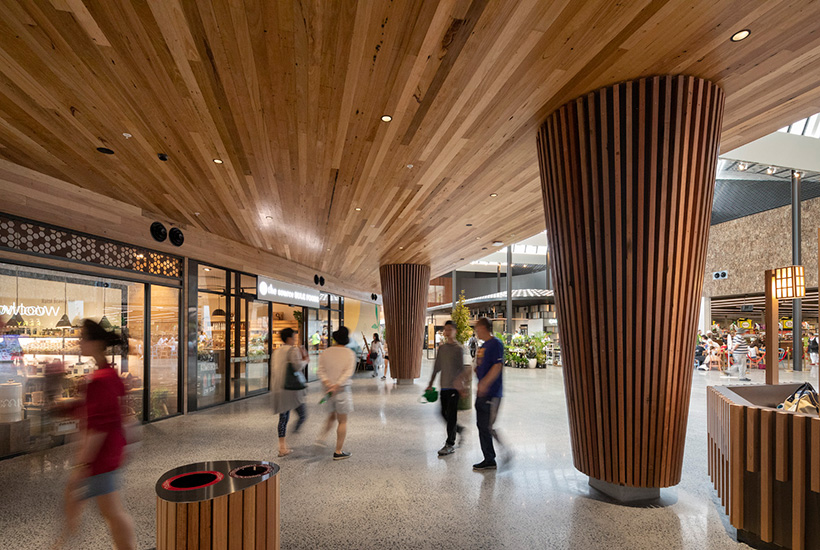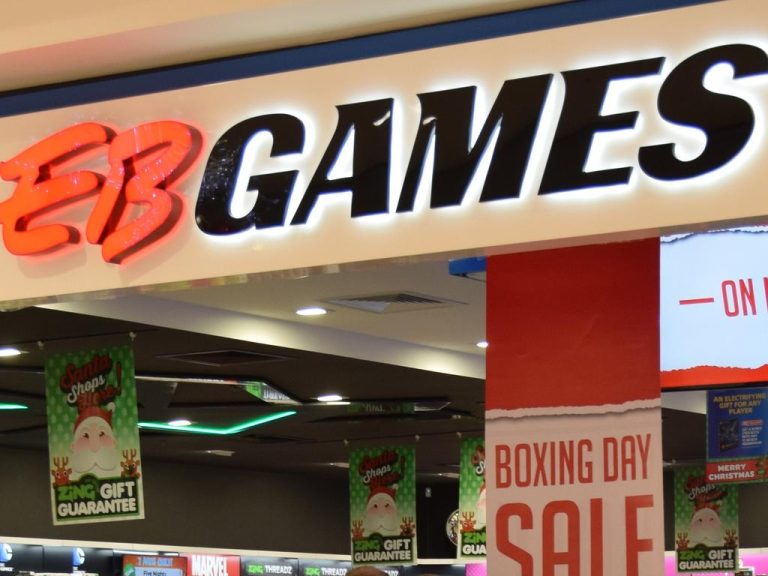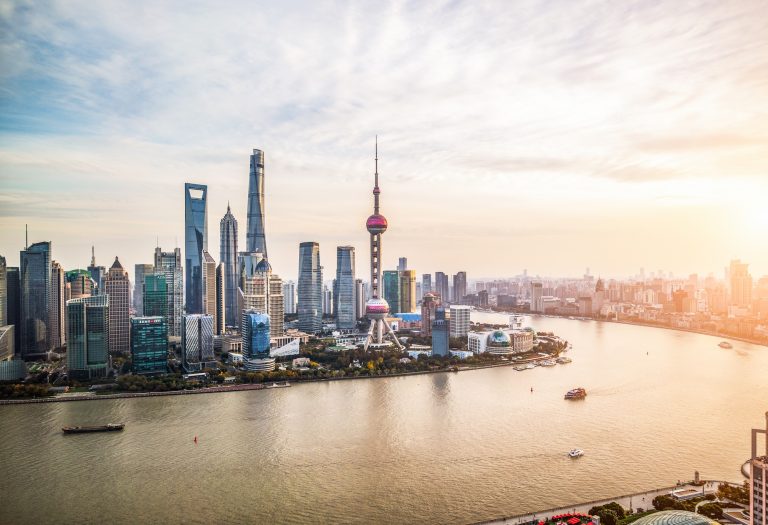Australian shopping centre set to become world’s most sustainable

A Melbourne shopping centre that generates more energy than it consumes is aiming to become a world leader in sustainable retail design. Burwood Brickworks Shopping Centre is currently vying for an internationally recognised certification for its construction and ongoing operation.
Built by Frasers Property, the Burwood Brickworks Shopping Centre is set to attain the ambitious Living Building Challenge certification, which measures the sustainability of every stage of the building’s construction as well as how the building is used by tenants and consumers.
Becoming a world leader in sustainable design
Completed in 2019 for an undisclosed amount, the Burwood Brickworks Shopping Centre opened just months before the COVID-19 pandemic hit.
To gain the LBC certification, the eastern suburbs shopping centre is being measured against the Living Future Institute’s seven petal rating system which monitors every stage of construction and how the building is used by the 40 tenancies. This included a green sheet which tracked the providence of every material used in construction which took some 20,000 hours.
The LBC certification is given out by the International Living Future Institute and it requires a structure to meet strict criteria for seven different performance areas or petals; place, water, energy, health and happiness, materials, equity, and beauty. There are currently 29 fully LBC certified structures around the world, including the Sustainable Building Research Centre in Wollongong.
The centre in Burwood has thus far achieved four of the seven petals with the remaining three relating to an independent audit of the building’s performance over an uninterrupted 12-month trading period, which has been set back by trading restrictions imposed by lockdowns. Frasers hopes the centre will be fully certified be the end of 2022.

The final phase of the centre’s LBC certification relates to the building’s performance over a 12-month period of uninterrupted trading, which has been set back by lockdowns. Picture: Frasers Property
So what makes this 13,000sqm shopping centre more sustainable than your average mall? It has a rainwater tank water system on the roof which collects all of the water the building requires, plus there is a 2000sqm urban farm on the roof and a large solar PV system which supplies all of the building’s energy needs, according to Frasers Property chief executive officer Anthony Boyd.
“When you talk about carbon neutrality, we make sure that we generate a 105% of the building’s [energy] uses. So it’s better than neutral,”Mr Boyd said.
“There’s a rooftop farm on this building, so it’s not only capturing water, it’s generating a lot of produce for the local restaurant to use. So you are designing a building in a specific way to maximise its environmental outcomes.”
The centre’s design primarily created by by NH Architects also includes a sawtooth roof with windows that can be opened to allow for air and light to flow through the building.
But Burwood Brickworks isn’t the only shopping centre built with sustainability credentials, the Ponds Shopping Centre in Sydney’s Blacktown which opened in 2015 achieved a six green star rating from the Green Building Council of Australia while the Westfield Sydney Retail Podium on Pitt and Castlereagh streets achieved a five green star rating from the GBCA for its 2011 refurbishment.
Ikea also has around 750,000 solar panels on the roofs of its Australian stores and distribution centres and aims to have all of its buildings generate all their own power by 2025.
What commercial tenants need to do to remain sustainable

The rooftop garden provides food for the Acre eatery in the form of herbs, vegetables, honey and some edible flowers. Picture: Frasers Property
A key part of the LBC requirements centres around what tenants like Dan Murphy’s, Woolworths and Reading Cinema can and can’t do when it comes to using their commercial space in the centre. The centre has 40 tenancies, though currently only 34 are occupied.
“Even someone like Woolworths, who is a key tenant, it’s not like they can just say ‘here’s what we do with every other store. We know exactly how to roll this out, let’s just go and do it’. So they were learning at the same time,” Mr Boyd said.
“It’s challenging because to tell a tenant ‘well you can’t use that material or you can’t do that with a way a light is working in the building’ or however those sort of restrictions might apply, our tenants have been fantastic in sticking the course [sic] and they’ll be instrumental in the ongoing operation too,” he said.
Frasers have detailed agreements with each tenant to ensure that the fit-out and ongoing operation of each leased property continually meets the targets set out in the LBC certification.
“So tenants [usually] have autonomy in how they fit-out and different contractors and materials, etc. so [in this case] they’ve had to follow the green sheet and that would be part of their contract. So they can’t use products that aren’t included in that green sheet.”
Building and operating the centre’s urban farm with an attached hospitality venue hasn’t been easy but it has been worthwhile, according to Acre Farmhouse Restaurant Burwood’s Luke Heard.
“It’s a hard thing to try and build a farm on a rooftop…it’s basically it’s own water course on that rooftop there. So you’re building a whole substrate soil, there’s a lot of engineering that goes towards it – that in itself is hard – and then you overlay it with the LBC accreditation building process then that makes it doubly difficult,” he said.
“The sustainability outcome only has one to go and that’s going to be improved, where as when you don’t have that you have more flexibility to swap things in and out that may not be as sustainable as the alternative.”
“It’s a fluid balancing act I guess, because you’ve got to meet the requirements but you’ve also got to deliver a commercial outcome that works. It was part of what we signed up to,” Mr Heard said.
Sustainable certification is no mean feat

The LBC certification of retail structures like the Burwood Brickworks is important as it focuses on how a structure is used as well as how it is built. Picture: Frasers Property
The LBC certification is considered more valuable than other sustainable certifications like the green star rating system because it focuses on ongoing building performance, according to RMIT senior lecturer at the School of Property, Construction and Project Management Dr Trivess Moore.
“The LBC and others have really driven that approach too and it’s not just the design, the vision and the intent but this building actually needs to perform as we believe it will.
“That I think adds a level of accountability to everyone that was involved in the process from concept of the project through to the design and construction and then even the occupation of the building. It really means that everyone has to play a critical role in delivering the sustainable outcome and it is delivering better quality outcomes.”
LBC certification, which has been likened to the construction equivalent of climbing Mount Everest, is seen as valuable in the market given the lifespan of the buildings involved.
“I think LBC is getting an increasing reach globally. People recognise the value in it. It’s one of the few tools or rating systems that’s regenerative in some of what it does, in requiring the building to generate more energy than it consumes and a range of other things.
“It really is seen as one of the leading tools because it is going beyond what a lot of other [green certification] tools do, not just in terms of requirements but in terms of what it covers in its rating,” Dr Moore said.
LBC isn’t the only sustainable rating system that takes a closer look at how non-residential structures operate.
The federal government’s National Australian Built Environment Rating System involves federal government certification of measures such as energy, water and waste in non-residential buildings.







